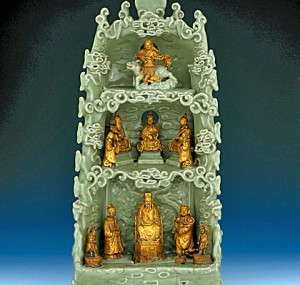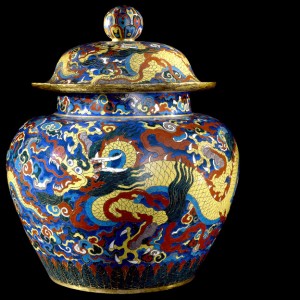Ming is a word familiar to most of us, and tends to be synonymous with any fragile, rare Eastern pottery. We all know the trope of the Priceless Ming Vase; someone on a (usually pretty mediocre) TV show happens upon a Ming vase, and is at pains to ensure that no harm comes to it. What happens next is inevitable – one particularly clumsy character will knock it off its absurdly precarious perch, smashing the vase into a million pieces, before spending the rest of the episode frantically trying to repair it!
In reality however, the Ming dynasty, also known as the Empire of the Great Ming, was the ruling house of China for around 300 years between the late 14th century and the middle of the 17th century. The influence of the Ming dynasty on the politics, art, governance and history of Asia is huge, but it is perhaps not always appreciated.
Now though, light is being shed on the dynasty through a new exhibition at the British Museum. The exhibition focuses on the years 1400 to 1450 – the period in which the dynasty cemented China as a superpower in an increasingly globalised world – and brings together artefacts from various museums in China, as well as the British Museum’s collection, and pieces from other museums in the UK.
The effect of this collaboration between the various museums is a stunning array of pieces, spanning the obligatory Ming porcelain, gold, jewels, textiles, paintings and much more. A large amount of the antiquities displayed have never been seen outside of China until now, and as such, this is a rare chance to view some truly stunning Eastern artwork.

Large porcelain flask painted with underglaze blue decoration of lotus flowers (1426-1435). Made in Jingdezhen, Jiangxi (province), China, Ming dynasty Xuande (reign)
The exhibition starts with a brief video, providing a timeline of the five rulers of the dynasty during the 50-year span covered. Initially focusing on the Yongle emperor and his decision to move the court of the dynasty from the city of Nanjing to Beijing, the exhibition moves on to look at all parts of Ming society, examining military, religion, hunting, every day courtly life, trade, and everything in between.
There is surprisingly little porcelain given its indelible association with the word Ming, although the standout piece is a huge, polychrome cloisonné jar, covered with dragons and various other regalia. Also amongst the collection are a vastly opulent sword, whose handle takes the form of a gilded dragon, a beautiful golden Buddha, a Daoist shrine crafted from a single piece of jade, and numerous pieces of red lacquered furniture.
Furthermore, adorning the final wall of the exhibition is, strangely enough, a painting by Andrea Mantegna, the northern Italian Renaissance artist. It depicts the Adoration of the Magi, but is notable for featuring a small Ming porcelain bowl, illustrating the pervading influence of the dynasty throughout the world at the time.
These are some of the very best pieces, but truth be told, almost everything in the place is a highlight – such was the quality of the artefacts on show, it took me nearly three hours to leave what is essentially a single room of pieces!
I went into this exhibition with virtually no knowledge of anything to do with the Ming dynasty, but came out feeling far better acquainted with what is a truly fascinating part of history and of art. Tickets are not cheap, but for such a brilliant exhibition, they are worth every penny.
Tickets for Ming: 50 years that changed China, are available to book online, and cost £16.50 (£13 for concessions). The exhibition is free to British Museum members. The exhibitions continues until 5 January 2015.
Copyright for all images belongs to the Trustees of the British Museum
For more information; visit www.britishmuseum.org


